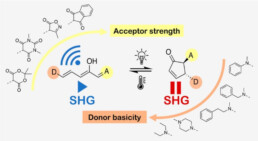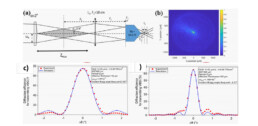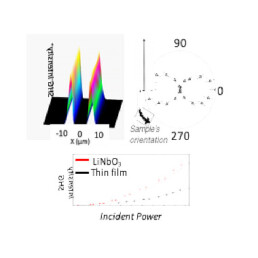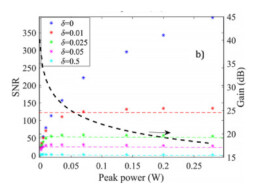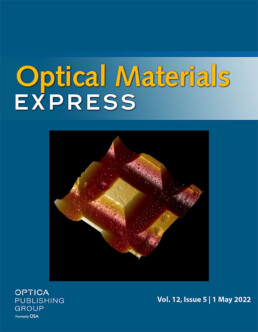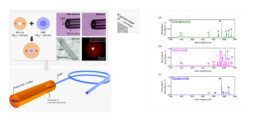Downsize all Optics in One
Coordinators : Thierry CARDINAL (ICMCB), Reiko ODA (CBMN)
Actors who will be able to understand how to design compact/monolithic integrated photonic devices and who will develop manufacturing technologies will have the keys to the development of photonics. The breakthroughs in these fields will be based on highly interdisciplinary approaches combining the understanding of properties together with an innovative adaptation of the composition of materials, and 2D or 3D structuring to optimize their functions.
The objective of the thrust is the development of integrated and monolithic light sources, photonic components and systems for signal processing and detection operating in the visible, near infrared or medium infrared.
The Bordeaux site has the specificity of gathering a strong expertise in chemistry and materials science that enables addressing the targeted challenges. The project merges together various field of expertise from 3D and 2D structuring, integration and manufacturing of components, multimodal spectroscopy, modeling from molecular system to full operating optical systems, development of new inorganic, inorganics and composite materials and expertise in laser material interaction. In the long term, the project will aim at the development of novel paradigms to expend photonics and manufacturing approaches.
The “Downsize-Optics” project has four workpackages to meet the target challenges. The first workpackage is dedicated to materials and their shaping, the second concerns 2D structuring, chemical surface chemistry and optics and multimodal spectroscopy the third is focused on the development of novel light sources and the last on the integration and study of components and all-optical systems.
1. Material development and manufacturing processes
Material development is one of the pillars of the trust. Several approaches are carried out for fabrication of new materials, implementation of novel approach for 2D/3D structuring high optical contrasts, and development of novel 3D printing techniques. The aim is not solely to design the materials composition but also to adapt it to its future integration and function in optical components and system. A specific effort is dedicated to heavy metal oxide transparent ceramics and glass and their integration solution in monolithic laser architecture for near and middle infrared applications. Femtosecond laser interactions are investigated for 3D high-resolution optical patterning in novel materials. 3D printing of optical materials is the other major objective currently being addressed by the WP.
This WP is backed by the national Equipex+ program entitled “Additive manufacturing of glasses and components for photonics”, in which the Bordeaux site is one of the main players.
2. 2D structuring, supramolecular chemistry, interface and multimodal spectroscopy
This WP addresses several issues from the surface spatial and chemical patterning and organization to the development of appropriate multimodal spectroscopy and imaging. One of these efforts is to study and engineer the strong links between molecular assemblies and micro/nano-functionalization processes in specific textures to control optical response. This is one of major challenges for the development of opto-electronics and photonic systems.
One of the aims of the WP is to investigate unexplored and versatile strategies and technologies, based on an unconventional use of disordered optical metasurfaces, to create brand-new appearance. The WP focuses also on the design of reversible photo-switchable molecular monolayers with contrasts in their electronic, magnetic or optical properties.
Another objective of the WP is the fabrication of active chiral materials, with properties that can be reversibly switched upon light illumination, or under another external stimulus (magnetic field, …) or through a strand displacement. Accurate multimodal setup is developed for the study of achiral and chiral interfaces. New chiroptical/opto-magnetic techniques as hyper-Rayleigh optical activity (HROA) is explored to fully characterize the novel properties.
3. Integrated Light sources and components
It is essential to develop new manufacturing practices for photonic systems in order to reduce costs and improve compactness robustness and reliability.
The WP focuses on physical and material science issues regarding novel solution for generating light while reducing at the most the free space propagation. In particular, it addresses i) the implementation of components for monolithic pulse laser sources in the promising wavelength range between 1 µm to 6 µm and the issue of exciton separation in organic materials which remains an important limit for the development of organic-based light sources, ii) the design and investigation of novel solutions for THz radiation and propagation, iii) novel second-order architectures and materials for compact three wave mixing, and iv) novel mid-IR Fiber laser development.
For this purpose, femtosecond direct laser writing of transparent targeted will be developed for a rapid direct manufacturing of photonic components and sub-assemblies such as integrated Bragg gratings, volume Bragg gratings or laser front end.
The generation of THz radiation in fibers brings significant advantage in compactness and reliability as well as for applications in dual optical/THz endoscopy. Non-centrosymmetrical patterning in amorphous materials offer solutions for online imprinting of second-order nonlinearity and quasi-phase matching for all integrated guided efficient photonic sources. The WP aims also at developing new mid-IR fiber sources delivering ultrashort and intense pulses with broad tunability, useful for fundamental physics, bio-imaging, sensing, and laser machining.
4. Integrated and fiber sensors
For multiple applications in photonics integrated sensors in “lab on fiber” or “lab on chip” are crucial for in situ light and chemical sensing.
The WP aims at the design a new class of glass/metal composite fibers for controlling both the light features (wavelength, energy, coherence…) and a simultaneous electrical excitation in hybrid optical/electrical fibers. The applications addressed concern sensing technology, electro-optic endoscopy, and high-resolution therapy.
Regarding integrated optical sensors system should be simple, sensitive, selective and portable for real-time in-situ detection of pollutants in ppb. Using the surface chemistry approaches developed in WP2, This WP aims at developing a sensor working in a wide spectral range (from visible et midIR) integrating the optical source, the transducer and the photodetector.
Teams
CELIA
Selected Publications
Demonstration of Type A volume Bragg gratings inscribed with a femtosecond Gaussian-Bessel laser beam
J. Harb, L. Talbot, Y. Petit, M. Bernier, L. Canioni / Optics Express 129: 69 (2023)
Figure. (a) Schematic drawing of the experimental setup for the generation of the Gaussian-Bessel beam using an axicon and the demagnifying 4F optical system. (b) Experimental image profile of the intensity cross-section of the Gaussian-Bessel beam close to the 𝑍𝑚𝑎𝑥2 region. (c-d) Experimental and simulated dependence of the diffraction efficiency on the deviation from the Bragg angle of the transmitting Bragg grating for λ=632.8 nm: (c) incident Bragg angle = 21.62° (first order), (d) incident Bragg angle = -6.17° (second order).
Electrically micro-polarized amorphous sodo-niobate film competing with crystalline lithium niobate second order optical response
Lara Karam, Frédéric Adamietz, Dominique Michau, Claudia Gonçalves, Myungkoo Kang, Rashi Sharma, G. Senthil Murugan, Thierry Cardinal, Evelyn Fargin, Vincent Rodriguez, Kathleen A. Richardson, Marc Dussauze*; Advanced Optical Materials 2000202 (2020)
Figure. Localization, geometry, and magnitude of the induced SONL optical response. a) SHG intensity map realized on the poled film with a linearly polarized light (VV) perpendicular to the imprinted line. b) Normalized SHG intensity as a function of the orientation of the sample (0–180° corresponds to the imprinted line perpendicular to the incident light polarization and 90–270° parallel). c) SHG intensity as a function of the linearly polarized incident light power for the thin film (in black oriented so that the imprinted line is perpendicular to the incident light) and for the LN single crystal (in red–oriented so that the c axis is collinear to the incident light polarization and so that c(2zzz is probed)
Fabrication and characterization of tapered photonic crystal fiber for broadband 2 µm: four-wave mixing-based fibered OPCPA
S.E. Ahmedou, G. Walter, J. Herbuvaux, R. Dauliat, S. Février, S. Petit, C. Valentin, D. Marion, J. Lhermite, L. Labonté, S. Tanzilli, F. Gérôme, B. Debord, F. Benabid, B. Leconte, G. Millot, P. Roy, R. Jamier, J.C. Delagnes ; Applied Physics B 129: 69 (2023)
Figure. Numerical simulations of the generated idler spectra along a taper PCF. The build-up of each spectra for the individual sections (a) F00, (b) F11, (c) F22 and (d) F33. The build-up of the full taper spectrum (e). The insets correspond to the output generated idler spectra
Noise analysis in a seeded four-wave mixing process generated in a photonic crystal fiber pumped by a chirped pulse
T. Guilberteau, C. Fourcade-Dutin, F. Fauquet, R. Dauliat, R. Jamier, H. Muñoz-Marco, P. Perez-Millan, P. Roy, P. Mounaix, D. Bigourd ; Optics Letters 48 (11), 2905 (2023)
Spatially-microstructured topology of chalcogenide glasses by a combination of electrothermal process and selective etching for functional infrared media
Lara Karam, Ricardo Alvarado, Florian Calzavara, Redouane Dahmani, Myungkoo Kang; Cesar Blanco, Frederic Adamietz, Kathleeen Richardson, Marc Dussauze ; Optical Material Express 12 , 5 (2022) 1920
Influence of Losses, Device Size, and Mode Confinement on Integrated Micro-Ring Resonator Performance for Absorption Spectroscopy Using Evanescent Field Sensing
P. Girault, L. Oyhenart, T. Rouanet, S. Joly, G. Beaudin, M. Canva, L. Bechou, P. G. Charette ; Journal of Lightwave Technology, 41, 5, 1571, (2022)
